Weeds with purple flowers are widespread in almost every garden. Some of these weeds are edible, and others are not because they are toxic for consumption. Weeds with purple flowers are beneficial because they attract pollinating insects, essential in every garden.
This article will show you how to identify weeds with purple flowers. I include several images to make identifying each weed species easier. Continue reading to learn all about weeds with purple flowers that are very beneficial to pollinators.
Table of Contents
Weeds With Purple Flowers Video
As a gardener, I have encountered numerous desired and undesired plants while nurturing beautiful gardens. Among the various weeds that find their way into our cherished flower beds and lawns, a particular group captivates me with their vibrant beauty: the weeds with purple flowers.
These enchanting botanical intruders exhibit an array of stunning purple hues, ranging from deep, velvety shades to delicate lavender tones. While these purple-flowered weeds may lack the intentionality and purposeful placement of intentionally planted flowers, they possess an undeniable charm that’s impossible to overlook.
In my garden, weeds with purple flowers grow every year. I let them grow because they attract pollinating insects that I need for my fruit trees and vegetable plants. Without these insects, getting fruit on my plants would be challenging. That’s why I prefer to let these weeds grow in my garden.
Check out this video and continue reading to learn more about weeds with purple flowers.
What Are the Tall Weeds with Purple Flowers Called?
Most weeds with purple flowers have small flowers and are low-growing. Some of the weeds with purple flowers are tall, and the most common are:
- Blue Vervain (Verbena hastata)
- Fireweed (Chamaenerion angustifolium)
- Bull Thistle (Cirsium vulgare)
- Spotted Knapweed (Centaurea maculosa)
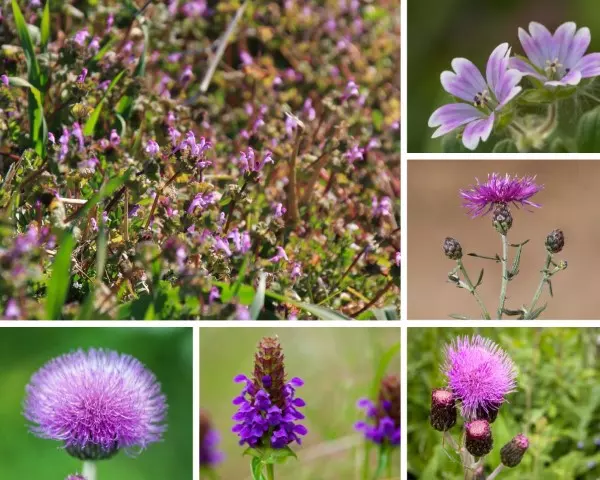
Creeping Charlie or Ground Ivy (Glechoma hederacea)
One of the most common lawn weeds with purple flowers is creeping Charlie. Creeping Charlie grows in cool, shady places with moist soil, such as alder groves, oak groves, hedgerows, and meadow margins.
It is a mint family member with small, roundish leaves with scalloped edges. Boil the stems and leaves to create an infusion to lower blood pressure or treat arterial inflammations. For more information about the anti-inflammatory effects of this weed, please read this scientific study.
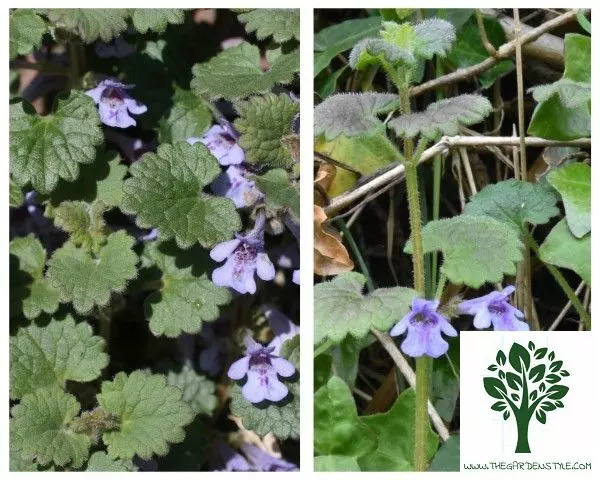
Dove’s-Foot Geranium (Geranium molle)
Dove’s-Foot is a beautiful purple flowering weed. Anyone who finds it in their garden will think it was planted intentionally. It is native to the Mediterranean region but has spread to many parts of the world. The plant gets its common name from the shape of its leaves, resembling a dove’s footprints.
Dove’s-foot geranium thrives in disturbed areas, such as gardens, lawns, roadsides, and waste areas. It prefers full sun to partial shade and can tolerate various soil conditions, including dry and compacted soil.
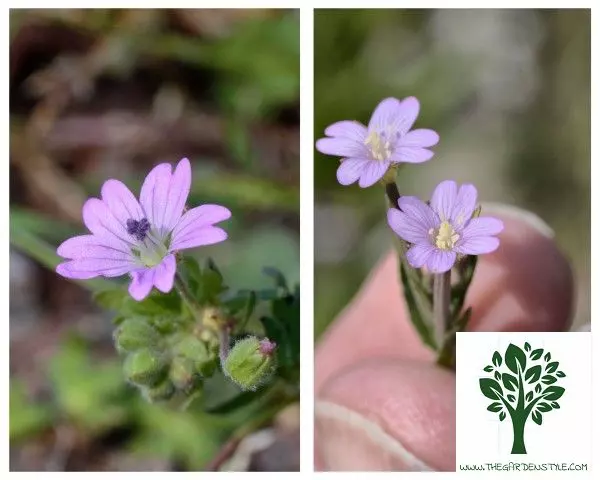
Blue Vervain (Verbena hastata)
Verbena hastata is an herbaceous perennial plant belonging to the Verbenaceae family, native to southeastern Canada and the eastern United States. It is an upright growing plant of about 20″ or 24″ (50 or 60 cm) in height; sometimes, it can reach higher heights with time.
It flowers abundantly from mid to late summer. The inflorescences develop at the end of the stems, forming dense spikes of vertical growth, long and narrow, between 2″ and 6″ (5 and 15 cm) long. Blue vervain is known for its tall, slender spikes of small blue-purple flowers.
It is resistant to short periods of drought. Still, it prefers moderately moist soil to develop properly, tolerates wet soils, even waterlogged or muddy occasionally, and can tolerate a little salinity in the cultivation soil.
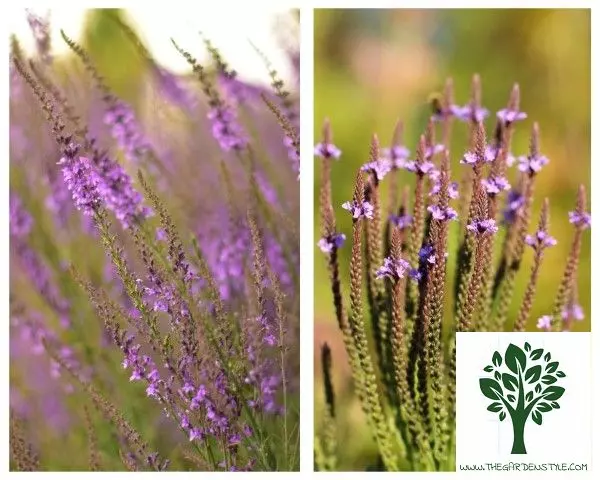
Bull Thistle (Cirsium vulgare)
Bull thistle, scientifically known as Cirsium vulgare, is a biennial or sometimes perennial herbaceous plant that belongs to the Asteraceae family. It is native to Europe and has been introduced to many other parts of the world, including North America, where it is considered an invasive weed.
This weed with purple flowers is known for its large, spiny leaves and distinctive purple flowers. Bull thistle is a robust plant reaching 3 to 6 feet (0.9 to 1.8 meters). It thrives in full sun and can tolerate various soil conditions, including dry and poor soils.
Bull thistle is known for its prolific seed production and the spiny nature of its leaves and bracts, which can make it difficult to handle. It spreads through wind-dispersed seeds that can travel long distances and remain viable in the soil for several years.
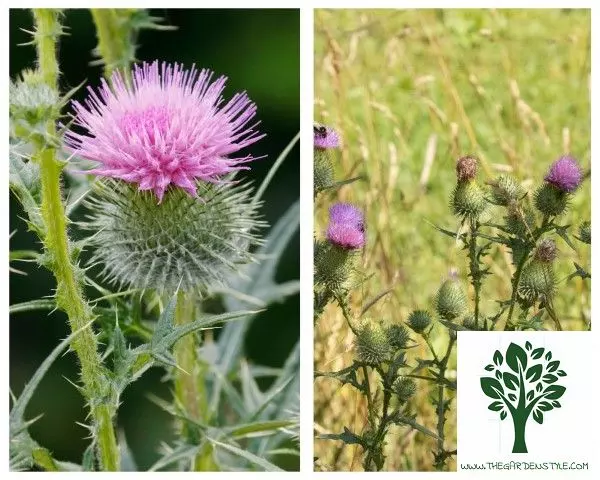
Bugleweed (Ajuga sp.)
Bugleweed, scientifically known as Ajuga, is a genus of herbaceous perennial plants in the mint family (Lamiaceae). Bugleweed is native to Europe but is widely grown as a ground cover in many parts of the world due to its attractive foliage and flowers.
Bugleweed thrives in moist, well-drained soil and can tolerate various light conditions, from full sun to partial shade. It is often used as a ground cover in gardens, along borders, or where other plants struggle to grow. It is one of the most beautiful weeds with purple flowers that attract many pollinating insects.
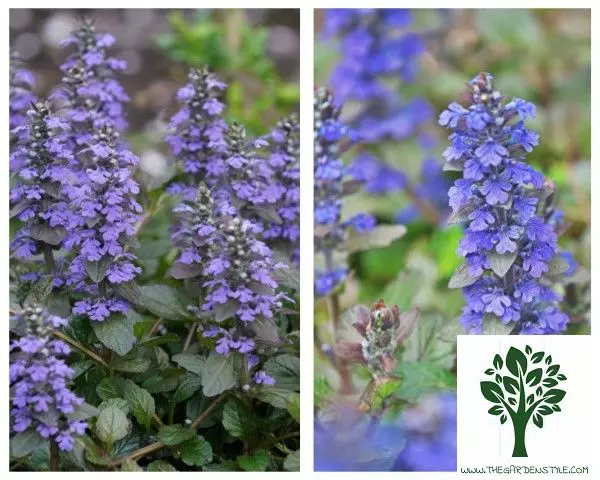
Comfrey (Symphytum officinale)
Although a weed with purple flowers, Comfrey should not be missing in any vegetable garden. Although Comfrey is a very invasive weed, it has excellent properties for the vegetable garden and attracts many pollinating insects.
Comfrey is a potassium-rich source of fertilizer. Therefore, planting this weed at any corner of the garden may be recommended. Its deep roots capture nutrients from unreachable layers to most other crop roots, bringing them closer to the topsoil layers and making them accessible to other plants.
Its leaves contain high potassium, an essential nutrient in the flowering and fruit production phase. When cut, they decompose very easily, releasing their nutrients. The crops most sensitive to potassium deficiency are peppers and tomatoes.
Additionally, the vigorous spreading nature of Comfrey can make it invasive in certain environments. Consider planting Comfrey in contained areas or using non-spreading cultivars if you’re concerned about its potential to take over your garden.
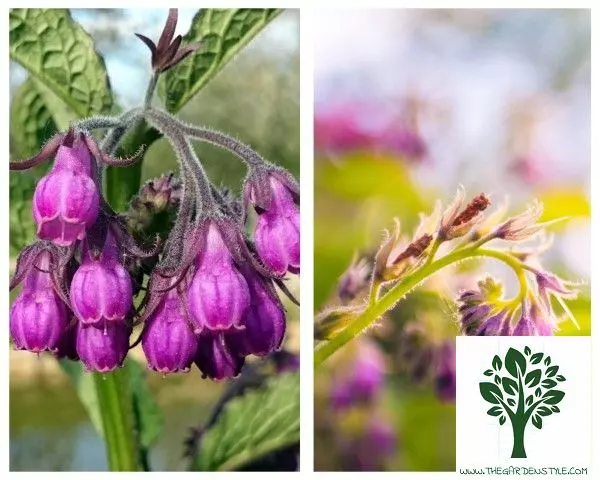
Canada Thistle (Cirsium arvense)
A biennial climber with upright stems that reach a height of 5 feet (1.5 m), the Canada thistle (Cirsium arvense) is distinguished by its loose clusters of aromatic purple flower heads and narrow, sharp, curly, prickly leaves. With roots capable of penetrating up to 10 feet (3 m) deep and 16 feet (5 m) laterally, the latter giving rise to new plants in the spring, the thistle can quickly become predominant.
Despite its name, it is not native to Canada but to Europe and Asia. It has become widespread in North America and many other regions worldwide. Canada thistle is highly invasive and can quickly overtake an area if left unchecked. It propagates through both seeds and vegetative propagation from its extensive underground rhizomes.
It is another of the weeds with purple flowers that attract many pollinators, although it is a very invasive variety. You must control its growth, or Canada thistle will easily overrun your garden.
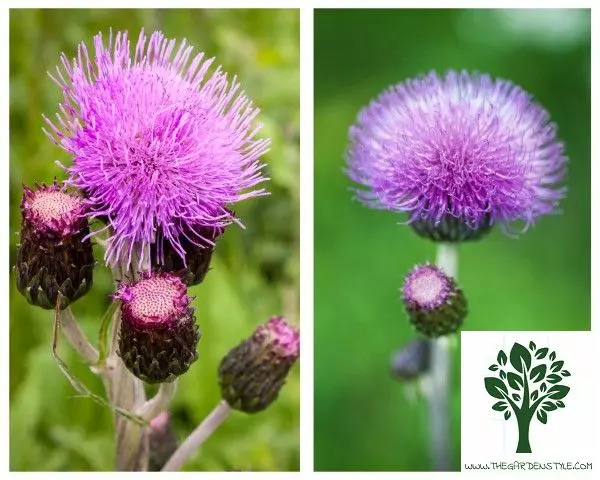
Henbit (Lamium amplexicaule)
Henbit is often considered a weed in lawns and gardens but has some ecological benefits. This weed with purple flowers is rich in vitamin C and potassium, of which the root and leaves have been consumed, edible, used in salads, for raw consumption, and cooked.
Henbit thrives in disturbed areas like lawns, gardens, fields, and open spaces. It prefers moist to dry soil and can tolerate various light conditions, from full sun to partial shade. Henbit is a common weed in lawns, especially during early spring.
Henbit dead nettle provides nectar for pollinators, such as bees and butterflies, making it beneficial for supporting local biodiversity. Additionally, it can serve as an early-season food source for grazing animals and as a cover crop to protect soil from erosion.
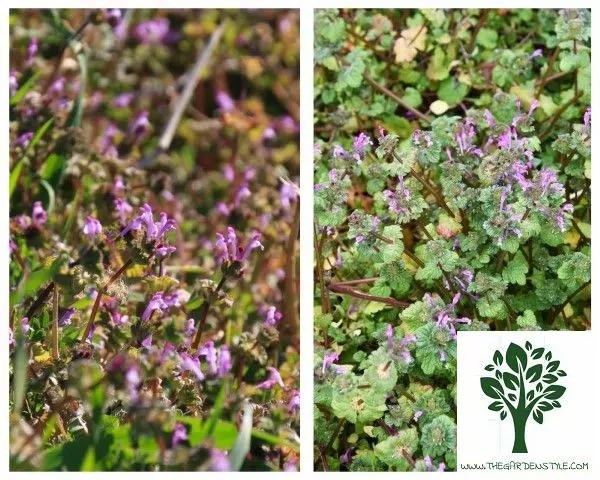
Purple Dead Nettle (Lamium purpureum)
Purple dead nettle can rapidly dominate large sections of lawns in certain regions, making it nearly as prevalent as dandelions in those areas. The term “dead nettle” describes this plant because, unlike the painful stinging nettle, it does not possess stinging hairs.
Purple dead nettle is a low-growing plant that typically reaches a height of 6″ to 12″ (15 to 30 cm). It has square stems with opposite heart-shaped or triangular leaves and serrated edges. Purple dead nettle thrives in disturbed areas like lawns, gardens, fields, and open spaces.
An article from the University of Michigan mentions purple dead nettle attracts many pollinating insects that are beneficial to the garden.
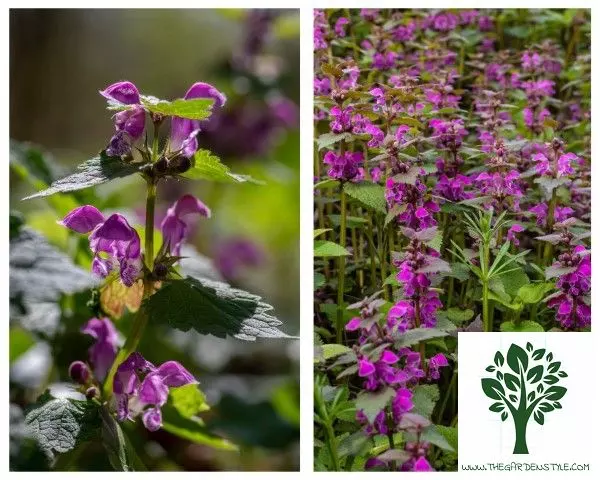
Fireweed (Chamaenerion angustifolium)
Fireweed, scientifically known as Chamaenerion angustifolium, is a perennial herbaceous plant native to northern regions of the Northern Hemisphere, including North America, Europe, and Asia.
Fireweed is known for its vibrant flowers and ability to colonize areas after wildfires or disturbances. This weed with purple flowers is a tall plant that can reach 3 to 8 feet (0.9 to 2.4 m). Its straight stem features narrow, lance-shaped leaves arranged alternately.
People have used fireweed in traditional herbal medicine for various purposes. You can consume the young shoots and leaves as a nutritious edible green. The University of Colorado mentions that fireweed plants possess a remarkable ability to adapt and are proficient in self-fertilization.
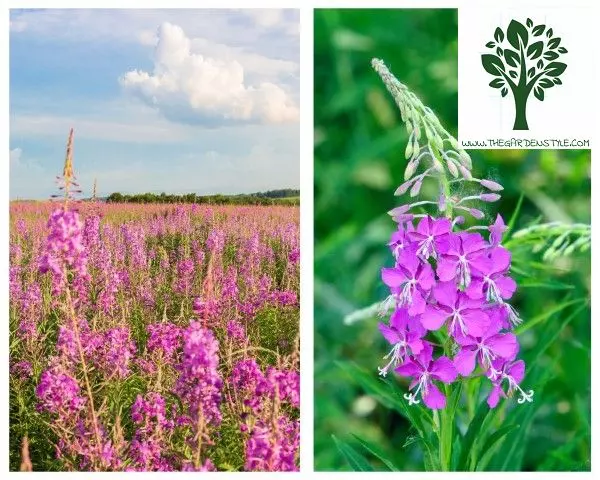
Spotted Knapweed (Centaurea maculosa)
Spotted knapweed is known for its showy flowers and aggressive growth, out-competing native vegetation in many areas. These weeds with purple flowers are highly invasive. They can quickly establish dense stands, beating the competition with native plants for water, nutrients, and space resources.
The plant also produces chemicals that inhibit the growth of surrounding plants, further aiding its ability to dominate the landscape. Controlling Spotted knapweed can be challenging due to its aggressive growth and extensive seed bank.
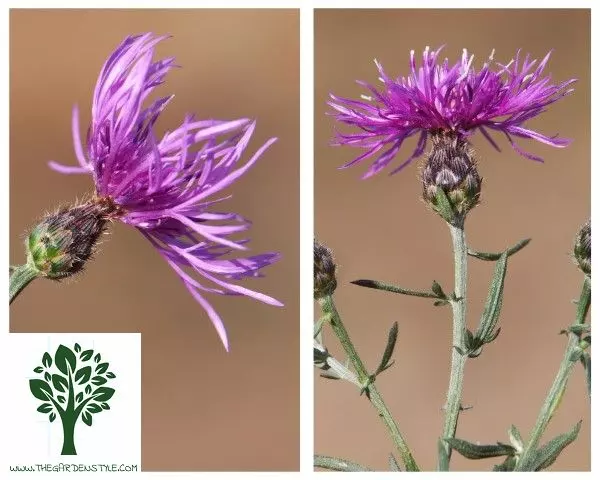
Heal-All (Prunella vulgaris)
Heal-All typically grows to 6″ to 12″ (15 to 30 cm). The leaves are generally dark green. In summer, Heal-All produces dense spikes of small, tubular flowers. The flowers can vary in color from purple to pink or white.
Heal-All has a long history of use in traditional herbal medicine. The plant contains various compounds, including flavonoids and rosmarinic acid, which are believed to have anti-inflammatory, antimicrobial, and antioxidant properties.
Heal-All is an important pollinator plant, attracting bees, butterflies, and other beneficial insects with its nectar-rich flowers.
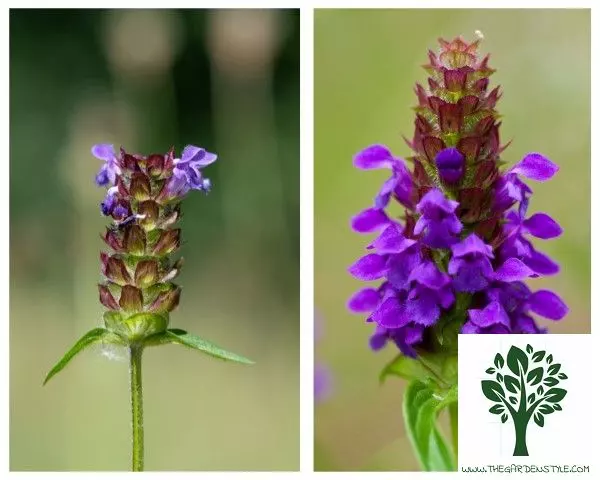
Wild Violet (Viola sp.)
Wild violets evoke mixed feelings among individuals, with some embracing their charm. In contrast, others perceive them as invasive nuisances, annoyed by their purple blooms invading the lawn. I find them stunning, as they thrive in damp, shaded areas, often overpowering grass and demonstrating resilience even when subjected to mowing.
Wild violets support pollinators, such as bees and butterflies, as they provide a source of nectar and pollen. The plants are also a food source for various caterpillars of butterfly species.
Some species of wild violets have culinary and medicinal uses. Certain violet species have edible flowers and leaves that you can use in salads, teas, or garnishes. Additionally, certain traditional herbal remedies have utilized wild violets for their potential medicinal properties, such as soothing coughs or treating skin conditions.
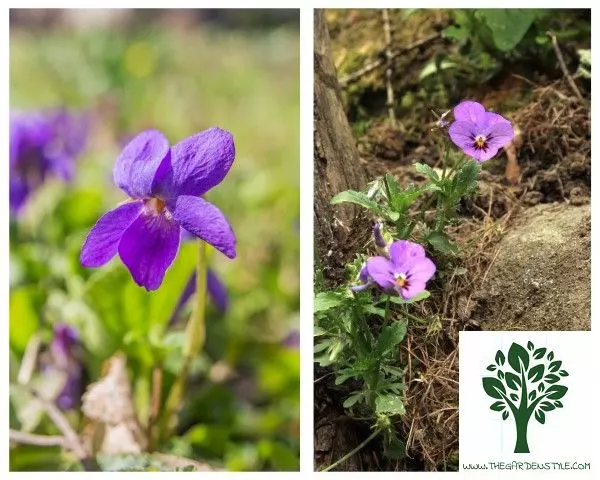
Nightshade (Solanum sp.)
Nightshade, scientifically known as Solanum, is a genus of flowering plants in the Solanaceae family. It includes many species, some of which are cultivated for food (tomato, eggplant, etc.). In contrast, others are considered weeds or poisonous plants.
Some nightshades, such as tomatoes and peppers, produce edible fruits. In contrast, others, like the deadly nightshade (Atropa belladonna), have toxic berries. These weeds with purple flowers are quite common in gardens everywhere.
Some Nightshade species, such as black nightshade (Solanum nigrum), are considered weeds in certain areas. They can readily spread and compete with other plants, particularly in disturbed habitats or agricultural fields.
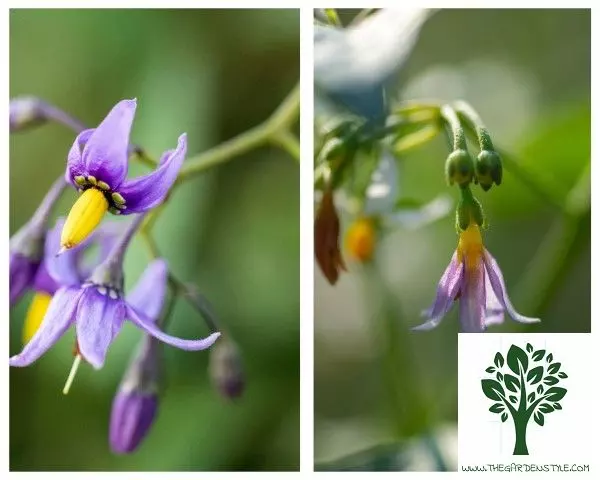
Purple Loosestrife (Lythrum salicaria)
Purple loosestrife is a perennial weed with purple flowers, which can grow up to 20″ (150 cm) and has a woody rhizome. It has erect stems of a quadrangular section, not very branched and covered with hairs, like the leaves and even the calyx.
While admired for its beauty, purple loosestrife is considered an invasive species in some areas due to its aggressive growth and potential ecological impacts. It prefers moist, fertile soil but can tolerate a range of conditions.
Purple loosestrife is known for its ability to form dense colonies, crowding out native vegetation and disrupting wetland habitats. Its extensive root system and rapid growth rate allow it to out-compete other plants for resources, such as water and nutrients.
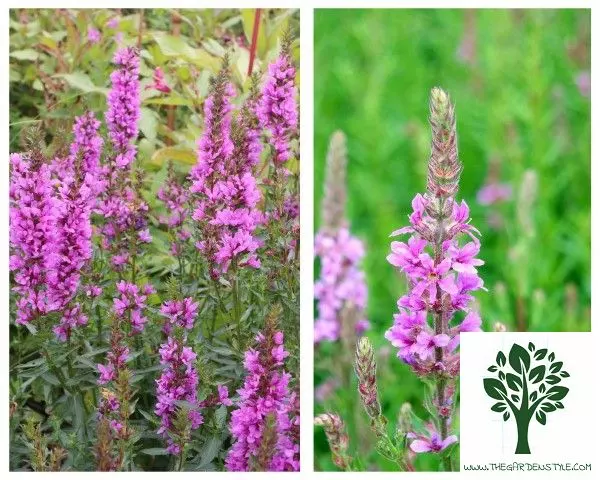
Violet Wood Sorrel (Oxalis violacea)
Violet wood sorrel is known for its delicate violet flowers and distinctive trifoliate leaves. It is native to North America, particularly in the eastern and central regions of the continent. The plant produces delicate flowers with five petals in various shades of violet or purple, adding to its ornamental value.
It is native to North America, extending from the eastern to central parts of the continent. Violet wood sorrel is a valuable food source for pollinators, such as bees and butterflies, as it provides nectar and pollen.
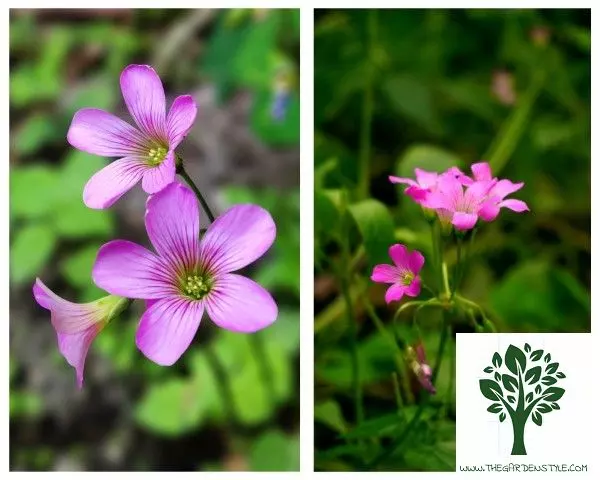
Purple Clover (Dalea purpurea)
Purple clover is a perennial flowering plant that belongs to the Fabaceae family. It is native to North America and is commonly found in prairies, meadows, and open woodlands. Purple clover is known for its vibrant purple flowers. This plant is highly valued for supporting pollinators and enhancing biodiversity.
Purple clover produces dense clusters of small, pea-like flowers with bright purple petals. The flowers attract a variety of pollinators, including bees and butterflies. The plant also contributes to soil health by fixing nitrogen, which enriches the soil and benefits surrounding vegetation.
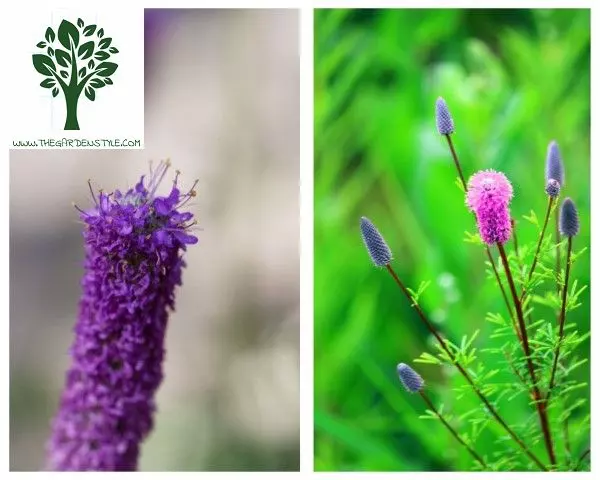
Final Conclusions
Purple flowering weeds benefit any garden because they attract pollinating insects, which are always necessary for all plants. Some of these weeds with purple flowers are invasive, and you need to control their growth to prevent them from spreading throughout the garden.
While some individuals may view purple-flowered weeds as bothersome in their lawns, it is crucial to acknowledge the aesthetic value of these plants and recognize their ecological importance. I recommend you to read our article on types of sticker weeds.
